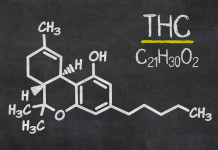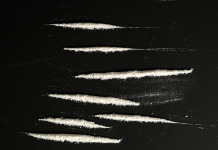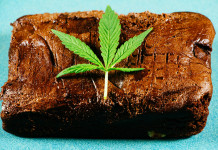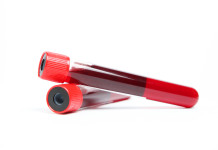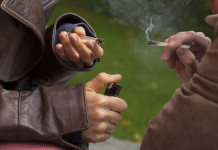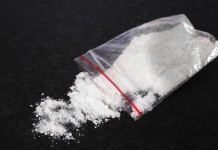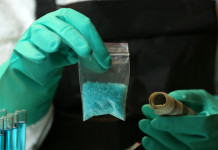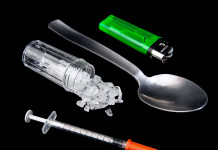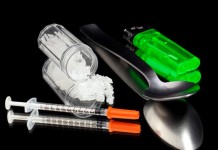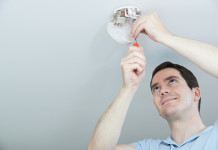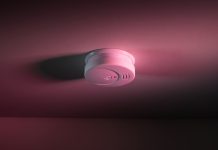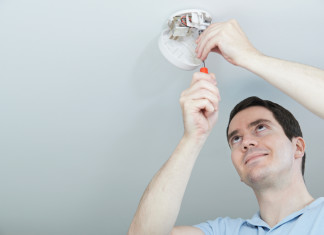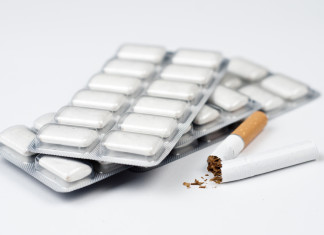Carbon monoxide poisoning kills more than 3,500 annually. Hunters and campers are at greater risk for suffering oxygen deprivation because they often use equipment or techniques that lead to the buildup of carbon monoxide.
Three men were returning to San Antonio from a fishing trip to Mexico in a pickup several years ago. One of the men drove while the other three slept in the camper on the pickup bed. One of the men awoke with a severe headache, dizziness, nausea and vomiting. When he smelled exhaust fumes, he woke his buddies. They had the same symptoms. The driver brought all three to a hospital, where they were found to be suffering from carbon monoxide (CO) poisoning. Their symptoms resolved after breathing pure oxygen in a hyperbaric chamber for 20 minutes.
Carbon monoxide is a colorless, tasteless, odorless gas produced by the incomplete combustion of organic fuels. Its first victim may have been some unwitting cave man who tried to barbecue mastodon steaks inside his cave. Today, carbon monoxide is the most common cause of poisoning in the United States, resulting in 3,500 deaths annually. And outdoor sportsmen, for a variety of reasons, are at especially high risk for CO poisoning.
Some common sources of carbon monoxide include barbecue grills, fires, furnaces, gas lamps, internal combustion engines, kitchen stoves, kerosene heaters, space heaters, Sterno, water heaters, wood stoves and fireplaces, butane, natural gas, tobacco and some paint strippers. Whenever an organic fuel burns in a closed, unventilated space, incomplete combustion leads to the accumulation of carbon monoxide in that space. In fact, every fuel-burning appliance and every automobile produces this gas in lethal amounts.
Common CO poisoning scenarios involving outdoormen include:
* Elk hunters and mountain climbers who get into trouble at high elevations by attempting to cook inside small, closed shelters during storms. The combination of decreased ambient oxygen at high altitude plus carbon monoxide leads to mountain sickness.
* Greenhorn hunters who heat their closed tents with butane heaters or charcoal fires.
* Outdoorsmen caught in brush or forest fires can become incapacitated by carbon monoxide and unable to escape the flames. Actively fighting the fire may lead to fatal CO poisoning in less than one minute.
* Mountain cabins and camping trailers with poorly maintained heaters that give off substantial amounts of carbon monoxide.
* Exhausted fishermen or hunters sleeping in the back of a station wagon or pickup that has holes in the body or a leaky exhaust.
Carbon monoxide is a chemical asphyxiant. It works its lethal magic by throwing an invisible, suffocating blanket over the body’s oxygen transport, delivery and utilization systems. Inhaled carbon monoxide grabs onto hemoglobin, the oxygen-carrying pigment in the red blood cells, to form carboxyhemoglobin (COHb). And it really sticks; carbon monoxide has 240 times the affinity for hemoglobin that oxygen has. Hemoglobin that is bound to carbon monoxide is not available to transport life-sustaining oxygen to the tissues. After a person breathes high levels of carbon monoxide for a few minutes, or low levels for hours or days, his blood becomes progressively more saturated with oxygen, and symptoms of oxygen deprivation (hypoxia) develop. And not only does carbon monoxide reduce the blood’s oxygen-carrying capacity, but it also interferes with oxygen delivery by making hemoglobin bind more tightly to oxygen molecules so that they are not readily released to oxygen-starved tissues. Finally, carbon monoxide disrupts the utilization of oxygen at the most fundamental level, by binding with chemical systems in the cells that play a crucial role in the metabolic furnace, for which oxygen is the basic fuel.
In any given situation, the extent of saturation of hemoglobin with carbon monoxide and the severity of CO poisoning depend on several factors, including:
* Metabolic rate: Children and pets are more sensitive to carbon monoxide because they have higher metabolic rates. (Miners used to take canaries down into the mines with them. When the canary keeled over, they knew carbon monoxide was in the air and it was time to skedaddle.)
* Exercise level: The harder your muscles work, the greater your oxygen requirements and the more rapidly you inhale ambient carbon monoxide.
* Length of exposure.
* Altitude: The air is thinner at higher altitudes, which means that there is less oxygen to compete with carbon monoxide for binding sites on the hemoglobin molecules.
* General health: People with heart or lung disease are more vulnerable to the effects of carbon monoxide. The brain and heart are the organs most sensitive to hypoxia, and they are the first to be affected by CO poisoning, especially in people with a history of coronary artery disease or stroke.
What makes carbon monoxide such a fiendish toxin is that it can masquerade as a wide variety of other acute illnesses, such as the flu, gastroenteritis, D.T.’s, migraine, depression or stroke. The fisherman in the back of the pickup who woke up with a headache and vomiting might have shrugged it off as food poisoning if he hadn’t smelled fumes and his partners had not had the same symptoms. They were lucky. Generally, in a situation where carbon monoxide is inhaled in high concentrations, the victim lapses into a coma, convulses and dies. When CO exposure is chronic, for example when people are sleeping in camping trailers with unvented stoves or faulty heaters, it causes flulike symptoms, such as fatigue, shortness of breath on exertion, nausea, headache, weakness, decreased concentration and irritability. If others in the same shelter or cabin have the same sickness, or if you notice that your pets are sick or acting strangely, you’d better forget about the flu and track down the source of carbon monoxide.
Here are the symptoms you will get with increasing CO exposure:
* Subclinical exposure (COHb level less than 10 percent): no symptoms. You can get COHb levels this high after smoking a cigarette or driving on a crowded freeway.
* Mild exposure (COHb level of 10 to 20 percent): headache, nausea or shortness of breath on exertion.
* Moderate exposure (COHb level of 20 to 30 percent): severe headache, irritability, weakness, blurred vision, nausea and vomiting, drowsiness, loss of manual dexterity or heart palpitations.
* Severe exposure (COHb level of 40 to 50 percent): rapid breathing and heart rate, collapse or loss of consciousness.
* Life-threatening exposure (COHb level of 40 to 50 percent): coma or convulsions.
* Lethal exposure (COHb level of more than 60 percent): heart and lung failure, cardiac arrest or death.
Carbon monoxide victims with under-lying coronary artery disease may have angina, irregular heartbeat or heart attacks. But the brain is the organ that takes the big hit in CO poisoning. Studies show that about one-third of survivors have personality deterioration and 43 percent have memory impairment. Other long-term complications include mental retardation, psychosis and blindness.
If you have any inkling that your buddy is suffering from CO poisoning, quickly get him out of the shelter and have him breathe fresh air. Keep him calm, quiet and warm. If he has significant symptoms, bring him to a hospital where he can be given 100 percent oxygen to breathe or be put into a hyperbaric chamber. (The half-life of COHb while breathing room air is five hours; while breathing pure oxygen, it’s 40 minutes.)
Here are some tips for preventing CO poisoning:
- Don’t use heaters, cookers or log fires in tightly closed spaces. Also, read the directions thoroughly before using fuel-burning appliances.
- Make sure that your shelter is adequately ventilated.
- Never turn in for the night with a heater, stove or lamp burning.
- Plan an emergency exit route and keep it clear.
- Yellow flames indicate incomplete combustion and CO generation. Make sure that there is a three-inch space between the top of your burner and the bottom of your cooking pot. A blue flame indicates that the stove is working properly.
- Check your gas appliances and furnace periodically to make sure that they are burning cleanly and are well-vented. Keep your flues and chimney clean.
- Check your vehicle for exhaust leaks or holes in the body.


